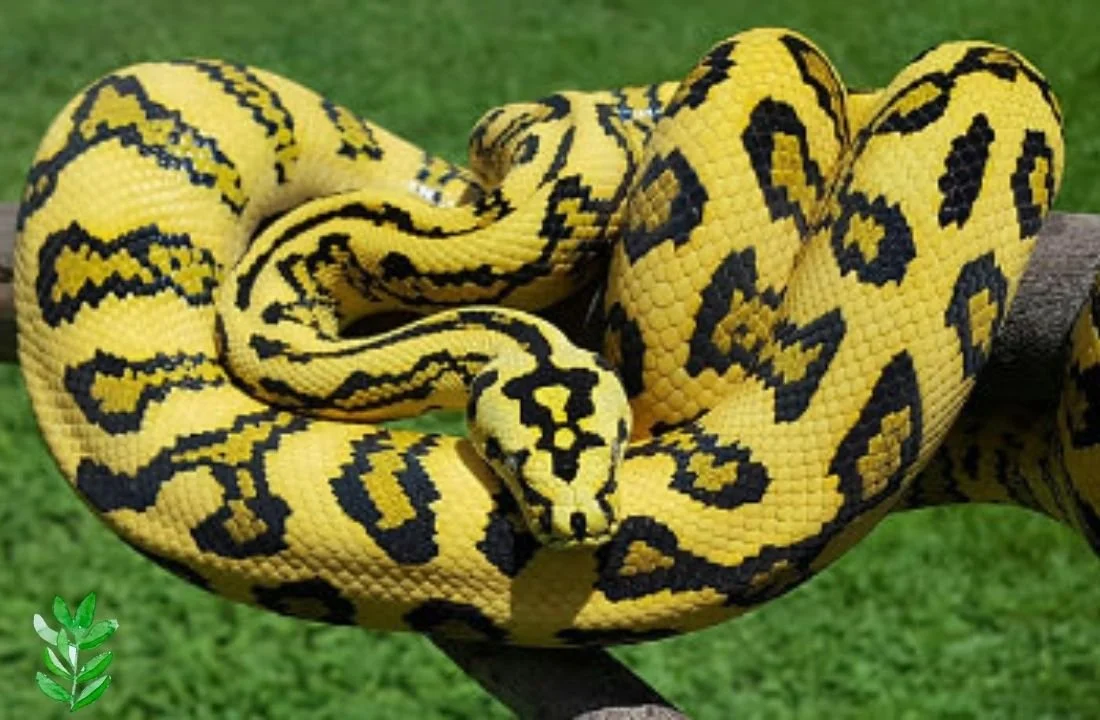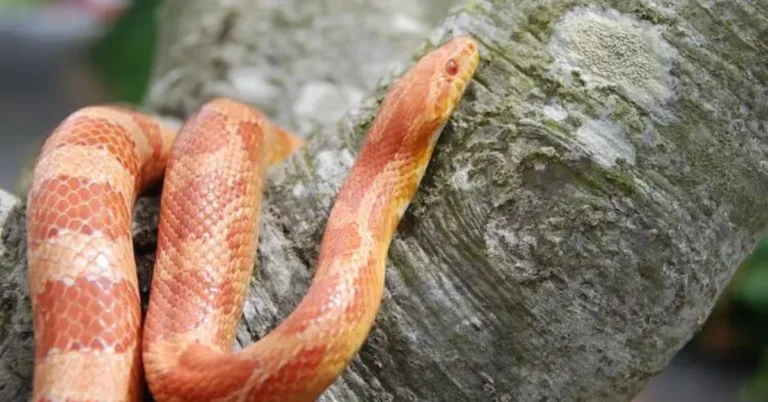Carpet Python Profile
The carpet python is a species of snake that is especially popular among pet enthusiasts and comes in a variety of colours such as zone green. Ranging in colour from pale yellow to black, they live mostly in rainforests and coastal areas. When these snakes are free, their food is mostly small birds and insects, and when they are in captivity, these snakes mostly eat mice. These snakes also require a lot of care when kept as pets, so it is also popular because they are easy to care for, so they are popular among People who love to have pets.
For More Information About Reptiles Click Here
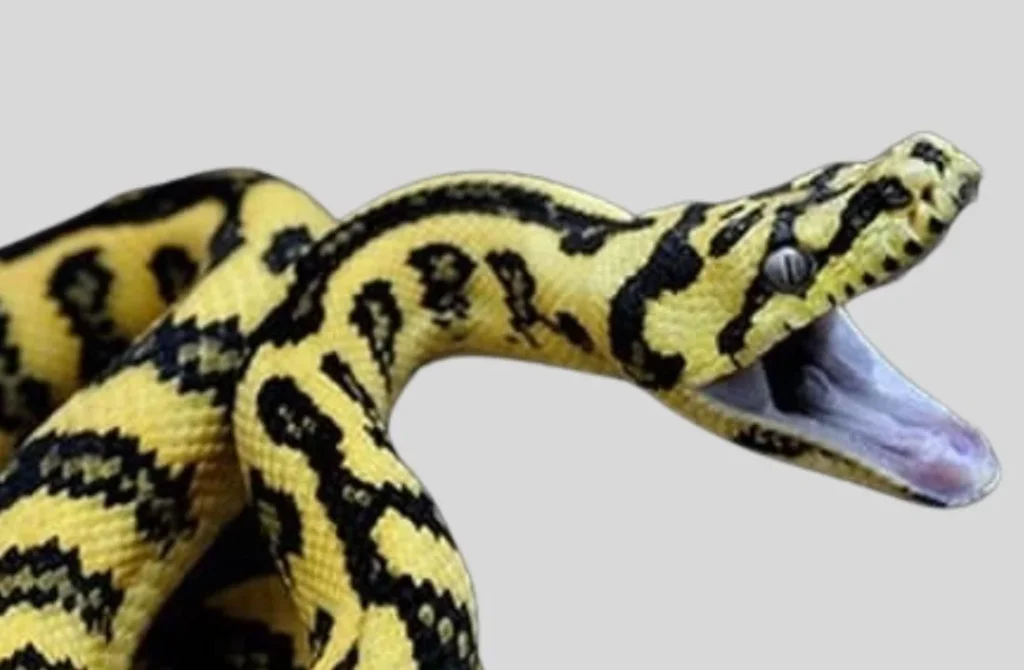
Quick Facts:
- Scientific Name: Morelia Spilota
- Common Name: Carpet Python
- Age: Carpet pythons live 10 to 15 years in the wild, but can live up to 20 to 30 years in captivity if properly cared for and fed.
- Size: 6 to 8 Feet (Average). But the Female size reached 9-10 feet.
Physical Description of Carpet Python:
Carpet pythons have a long and slender bodies, triangular-shaped heads, strong muscles that help them hold their prey tightly, and a very strong grip on their prey. It becomes impossible for the victim to escape. Their fur is smooth which gives a shiny appearance which adds to their beauty. The structure of their eyes is such that they are thin and round, which differs from other snakes. Because of these thin round eyes, they hunt more at night.
Geographic Range of Carpet Python:
These snakes are more common in areas of Australia, it is more common in the north and in difficult areas of Australia and it has also been found in some areas of Indonesia.
Habitat of Carpet Python:
The carpet python lives in a variety of environments such as rainforests, dry forests, coastal areas, among weeds and grasses, and in urban areas. They also live in humid forests because they get enough space to cover and the purpose of living in dry forests is that they get sun easily and also get prey and these snakes are mostly near water. They also live where they can find both shelter and prey. Sometimes these snakes like to live in cities because they can find food in parks and gardens there.
Behaviour of Carpet Python:
The behaviour of snakes is somewhat like that these snakes mostly like to stay silent and they are calm and they like solitude these snakes mostly go out hunting at night and they hide in trees and bushes. Although these snakes prefer to remain silent, male snakes also fight to get the attention of a female snake, and the one who wins the fight takes care of the female snake.
Reproduction and Life Cycle of Carpet Python:
This snakes is one of the egg-laying snakes. The female carpet python lays 10 to 50 eggs at a time. They take great care to protect the eggs and provide warmth to the eggs through their muscles and body. And take measures to protect them when the children leave, then stop protecting them. Their life cycle is something like this: the eggs develop inside their shell and require constant humidity and heat and hatch after about two and a half to three months. They grow up quickly and shed their fur many times to make room for food in their bodies.
Food and Water of Carpet Python:
Carpet pythons are carnivorous reptiles that prey on ground reptiles, insects, birds, and animals. When kept in captivity, they are given a special diet to compensate for their lack of food while in captivity. They are fed mice and quails and are not too large in size so that carpet pythons can easily digest them. When in captivity, carpet pythons need fresh and clean water to drink and prefer to drink water in a large bowl to soak their bodies in because they also need adequate humidity. Daily cleaning is important so that the water bowl is not dirty and the carpet pythons can avoid various diseases.
Lighting and Heating of Carpet Python:
In the tank in which the carpet python is kept, light should be provided for 12 hours so that the snake knows day and night. This operation can also be done by throwing different lights, such as fluorescent lights or UVB lamps. through which are also quite healthy for snakes. Just as lighting is important for carpet pythons, heat is also important for these snakes. Keep the temperature between twenty-five and thirty degrees Celsius during the daytime. As soon as the night falls, decrease the temperature of the snake’s tank to twenty-five degrees and make sure that the place where the snake sleeps is warm so that the snake can sleep easily.
Handling and Care for Carpet Python:
When it’s your turn to handle a carpet python, it’s important to prioritise your safety and that of your smooth-moving friend. Maybe that will be helpful for both of you. We will teach you some techniques that you can use to strengthen your relationship.
- First, wash your hands thoroughly every time you go to handle the snake to get rid of any smell from your hands.
- Whenever you approach your snake, approach it calmly and calmly. Avoid sudden movements and loud noises.
- Avoid excessive handling when you bring your snake home as a pet and increase your sessions so that the snake is well-adjusted to the environment as it becomes well-adjusted. Then you can reduce the interval in your session.
- Although snakes cannot speak, they try to explain through their body, so you try to understand their words, if they are in pain, find a solution for them, and if they are hungry, arrange for their food. Do what can build a good relationship between you two.
Predators:
If carpet pythons live in the wild or free, they usually eat reptiles, insects, and birds, and if they are kept in captivity or kept as pets, you should feed them rats and quails according to their size. can and take care that the food you give them should be given to them according to their size so that they do not have difficulty in digesting the food.
Common Health Problems in Carpet Python:
- Carpet pythons have trouble breathing and cough, which is often caused by low temperatures and humidity.
- If they don’t get enough moisture, they find it very difficult to shed their fur, due to which they don’t shed their old fur properly.
- If they eat food larger than their size, they find it difficult to digest, due to which they can also suffer from obesity.
- The egg-trapping disease is quite common in female snakes, and if their egg does get stuck, it can cause serious health problems.
Popular Carpet Python Morphs:
Jungle Carpet Python:
- Scientific Name: Morelia spilota cheynei
- Common Name: Jungle carpet python
- Colour: Bright yellow with black markings
- Age: Up to 20 years
- Size: 6 to 8 feet
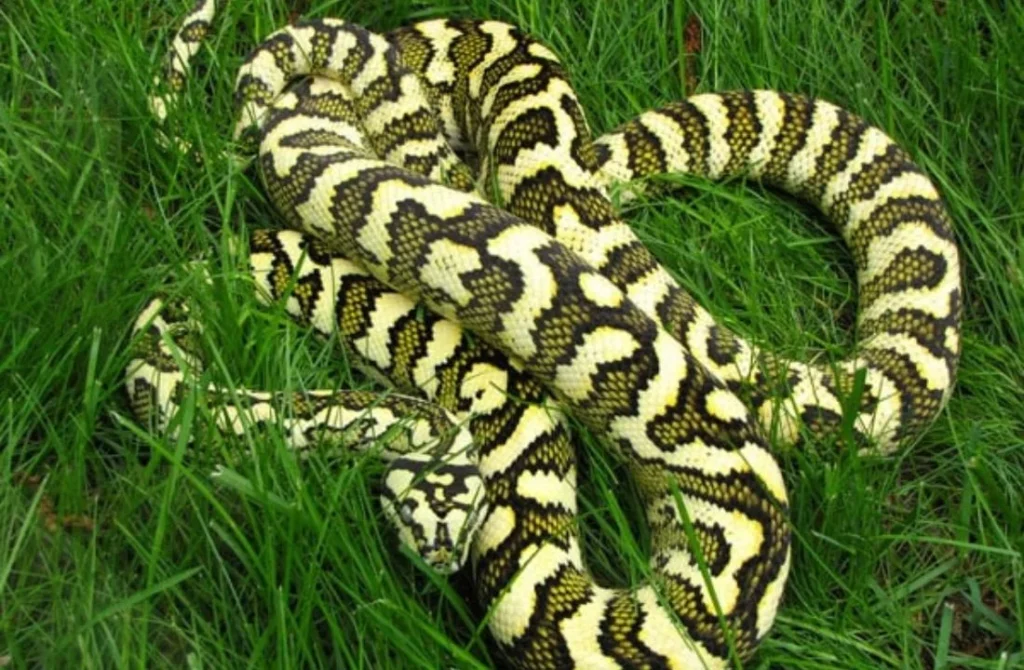
Coastal Carpet Python:
- Scientific Name: Morelia spilota mcdowelli
- Common Name: Coastal carpet python
- Colour: Gold and black with a more uniform pattern.
- Age: Up to 20 years
- Size: 6 to 9 feet
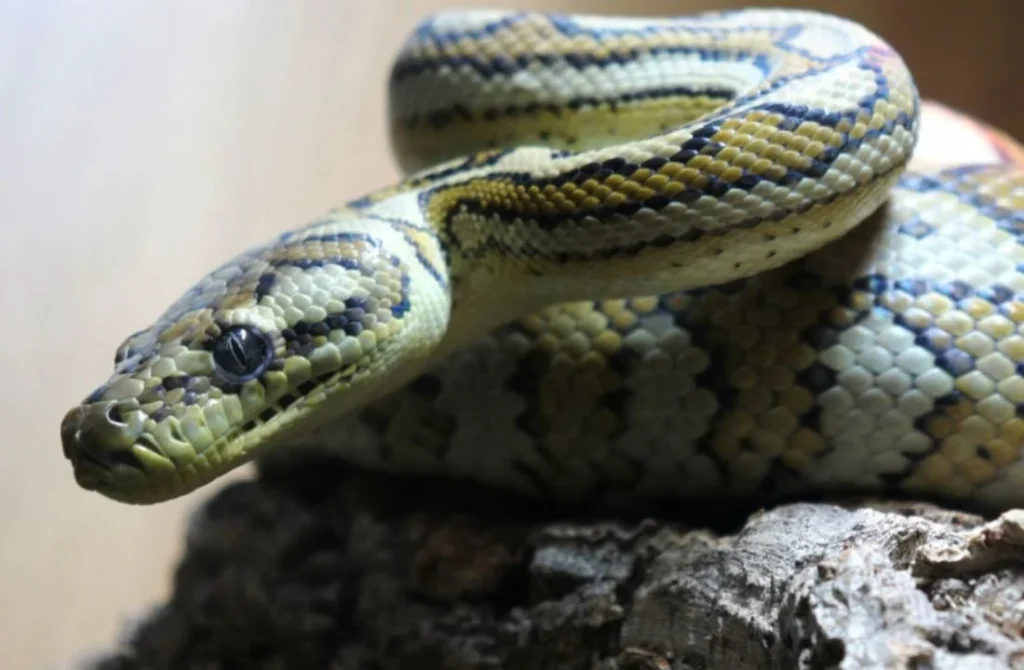
Conclusion:
In addition to telling you that carpet pythons mostly like to live in wetlands and that they want peace and quiet, this page gives you a solid understanding of which regions the species is found in, including Australia and Indonesia. We’ve been informed about how to take care of your snake and what steps to take to better your relationship with it. They also occasionally travel to urban areas and dry forests in search of food.

